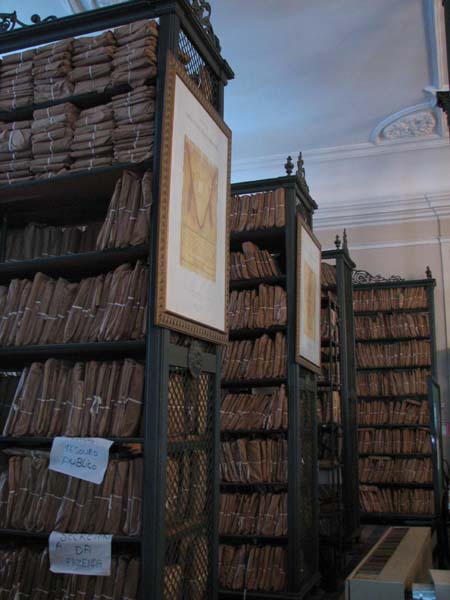One of the original archival documents (included in set no. 3) can be viewed here.
All of the sets below are .pdf files, ready for printing. Please feel free to use them in the classroom, with due credit to me (Heather Flynn Roller) and this site.
All of the sets below are .pdf files, ready for printing. Please feel free to use them in the classroom, with due credit to me (Heather Flynn Roller) and this site.
1. The Portuguese Inquisition Comes to the Amazon
Belém, Captaincy of Pará, Brazil
1764 and 1767 (3 documents)
Themes: religion and deviance; sorcery and magic; forms of resistance; gender and sexuality; race and ethnicity; popular culture
Document genre: Inquisition denunciations
Source: José Amaral Lapa, ed., Livro da Visitação do Santo Ofício ao Estado do Grão-Pará, 1763-1769 (Petrópolis: Vozes, 1978).
2. “They are the Hands and Feet of the Europeans”
Lisbon, Portugal
c. 1758-1776 (excerpts from a longer work)
Themes: labor regimes; the colonial economy; social hierarchies
Document genre: missionary chronicle
Source: João Daniel, Tesouro descoberto no máximo rio Amazonas (Rio de Janeiro: Contrapunto, 2004), Vol. 2, p. 243-248.
3. Exploits of a Native Headman
Village of Pinhel, Captaincy of Pará, Brazil
1769 and 1770 (2 documents)
Themes: forms of resistance; colonial Indian administration; frontier violence; social networks
Document genre: village-level correspondence
Source: Arquivo Público do Estado do Pará, Brazil
4. Bringing Indians into the Colonial Sphere
Villages of Baião and Franca, Captaincy of Pará, Brazil
1775 and 1766 (2 documents)
Themes: cultural intermediaries; colonial Indian administration; cross-cultural contact and communication
Document genres: village-level correspondence
Source: Arquivo Público do Estado do Pará, Brazil
5. A Voluntary Slave?
Belém, Captaincy of Pará, Brazil
1780 and 1784 (3 documents)
Themes: slavery and servitude; forms of resistance; social hierarchies
Document genres: notarial documents; official correspondence
Source: Arquivo Histórico Ultramarino in Lisbon, Portugal
A note on translations and annotations:
The
act of translating requires a series of interpretive decisions.
In the interest of transparency, these are the conventions that I
have chosen to adopt:
- When no adequate equivalent exists in English, the original Portuguese or native-language term has been noted in parentheses.
- Punctuation and sentence breaks have been inserted and tense usage has been rendered more consistent.
- Words have been added [enclosed in square brackets] for clarification or to make referents in a passage more clear.
- Footnotes have been provided for various terms, historical figures, and events, in order to clarify meaning, provide context, or indicate ambiguity or illegible words in the document.
In general, I have followed the Modern Language Association’s Guidelines for Editors of Scholarly Editions.
